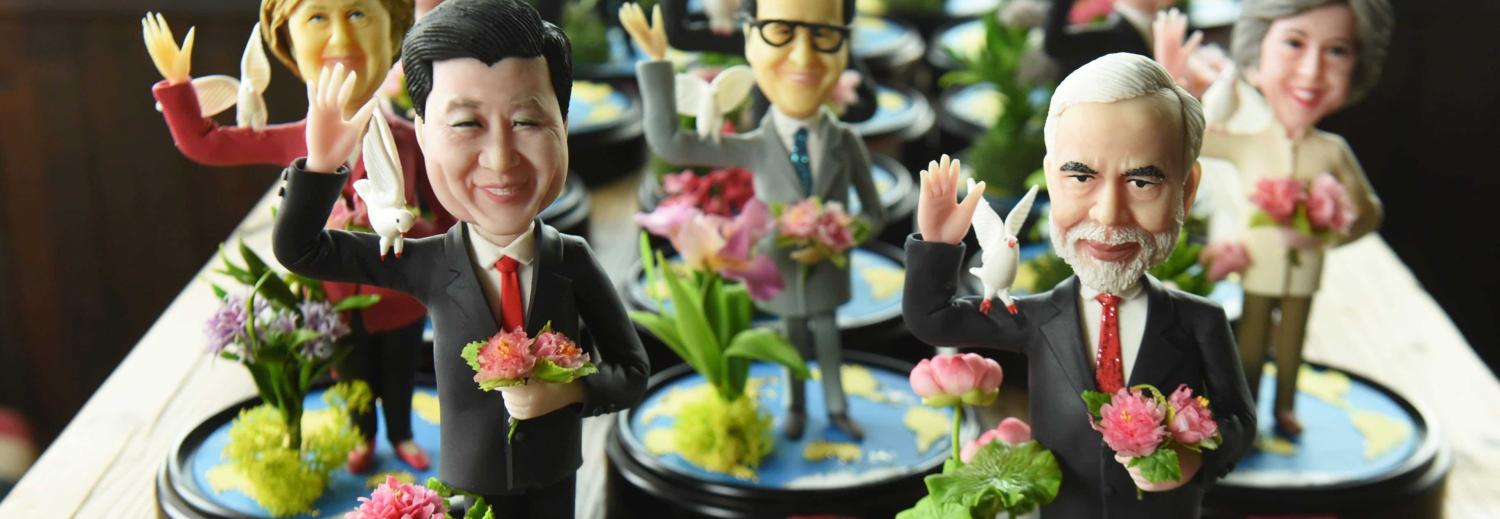The “informal summit” in Wuhan, China, between India’s Prime Minister Narendra Modi and China’s President Xi Jinping last month generated a wave of commentary in India, China, and further afield.
The Chinese media played it up, heralding a major breakthrough in which India had “chosen” China.
The Indian media was more circumspect, and often critical. Some veteran observers of India–China relations saw the summit as a reversal, even capitulation, of India’s recent hardening approach to China. Others welcomed it as an overdue course-correction, implicitly laying the blame for the deteriorating relationship at New Delhi’s door.
The reality was much more prosaic. There are two reasons that the Wuhan summit did not represent a reversal of Indian policy, much less a reset.
First, despite the surprise announcement, the summit did not come out of the blue. According to China’s Ambassador to India, it was first proposed by Modi in June 2017 at a bilateral with Xi in Astana, Kazakhstan. An informal summit was therefore in the works even before the Doklam military confrontation last summer.
Plans continued even as China’s foreign minister Wang Yi and state councillor Yang Jiechi visited India in late 2017. The Wuhan summit was stood up because of longer-term geopolitical trends, rather than any short-term crisis.
Second, although Modi and Xi exchanged perspectives on a variety of issues, based on the official read-outs from both governments there is no evidence that either side made any serious concessions.
Some commentators have speculated that New Delhi altered its approach to the Tibetan government in exile, ceded influence to China in the Maldives, or kept Australia out of the Malabar naval exercises as part of a general compromise with Beijing.
Such links are misleading. An Indian memo recommending that officials not appear publicly with the Tibetan government in exile was not without recent precedent, and was in any case not adhered to. Similarly, the Maldives political crisis has given rise to exaggerated reporting (contradicted here and here) concerning China’s military role.
If anything, there has even been some alignment in Beijing’s and New Delhi’s approaches to the crisis. Meanwhile, India–Australia military cooperation, rather than being put on hold, has accelerated.
But India made it clear a year ago that a resurrection of quadrilateral cooperation would not be linked to Australia’s inclusion in the Malabar naval exercises. This helps to ensure the sustainability of both the “Quad” and Malabar.
If India has not made any serious concessions to China, neither has China to India. China’s inroads in the Indian Ocean and in South Asia – which have caused India a great deal of discomfort – are unlikely to reverse. China has not indicated support for an Indian leadership position in such forums as the Nuclear Suppliers Group or UN Security Council. The trade deficit remains gaping at $52 billion. Beijing’s recent offer to exempt import tariffs on some Indian pharmaceuticals has in fact been made previously, to little effect.
The differences between India and China are therefore still as wide as they were before Wuhan.
Some broad areas of cooperation did emerge from the summit. One was a welcome reiteration to better manage differences along the disputed boundary. Another, India–China cooperation in Afghanistan, was in fact mooted more than a year earlier, even before the Belt and Road Forum in 2017 which India boycotted. As such, it cannot represent a softening of India’s stance on China’s Belt and Road Initiative, as some have interpreted it.
Aspects of India–China cooperation have also continued throughout, despite differences, including in the Shanghai Cooperation Organisation, BRICS, and Asian Infrastructure Investment Bank. To give but one example of recent tactical cooperation, China dropped its hold on Pakistan’s return to the Financial Action Task Force’s “greylist” in return for Indian support for a Chinese leadership position on that body.
Consequently, rather than a reset, the Wuhan summit was primarily the product of a more fluid geopolitical landscape, in which both sides saw an interest in hitting the pause button on a steadily more competitive relationship. In that sense, it is not dissimilar to Japan’s ongoing “thaw” with China.
Despite a forthcoming general election, India must use the resulting time and breathing space wisely, because its effects will be temporary.
It will have to continue securing the Indian Ocean by maintaining year-round deployments from the Gulf of Aden to the Straits of Malacca; operationalising military agreements with, among others, the US, France, Singapore, and Oman; and working with Indian Ocean island countries to improve its maritime domain awareness.
New Delhi must also further deepen its engagement with Southeast Asia, improving air, ground, and maritime connectivity, enhancing its security role, and preserving its diplomatic momentum. And India must continue to enhance its strategic partnerships with other countries that share its concerns about China’s rise, including (but not limited to) the US, Japan, and Australia.
The longer the India–China timeout lasts, the better it will be for both countries. But it would be unfortunate if in the meantime New Delhi succumbs to either complacency or defeatism.

